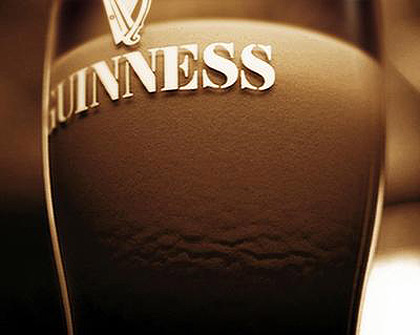
So why down? Turns out the glass has everything to do with it. The bubbles get trapped on the side, and get pulled down. Pressure forces bubbles up the center, and out. Seems simple enough right?
Well, Irish mathematicians set out to figure out if the glass changes this phenomenon. Bascially, they mathematically modelled the bubbles flow in a pint glass, and what they call – the “anti pint glass.” The bottom of the glass slopes out, or inverted from the traditional pint. [See Graphic]
If you can tell by the little arrows, the bubbles travel downward on the traditional glass, and up on the “anti” pint. Due to higher bubble density at the edges, the central column has less drag force so the bubbles against the wall flow up. There you have it. Guinness bubbles explained by mathematics, and fluid dynamics. Now go, experiment on your own. [CornellUniversity]
The liquid density of Guinness






